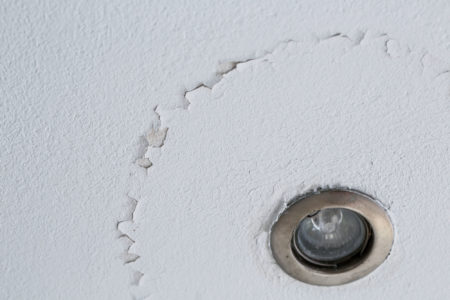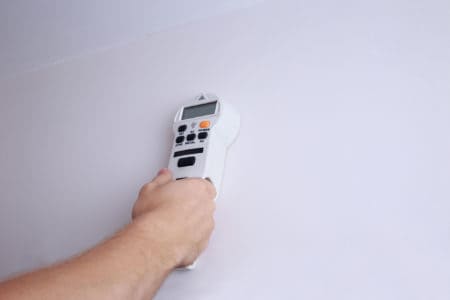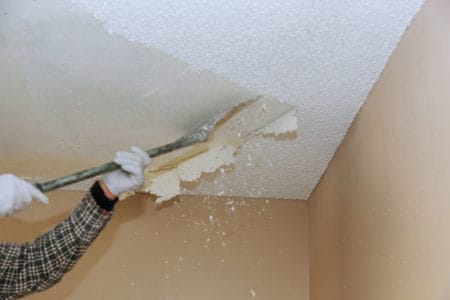Are you looking to free up some floor space but not sure what to do with your plants? Hanging them from the ceiling is easy and stylish!
So, I’m going to show you how to hang plants from ceiling structures. The following methods are suitable for renter-friendly and restrictive houses and apartments alike.
Key Takeaways
- Select a suitable method to hang plants based on weight and ceiling type.
- Use heavy-duty hooks, swag hooks, or adhesive hooks depending on the plant’s weight.
- Ensure proper drainage and watering for hanging plants to keep them healthy.
- Explore creative hanging methods such as macramé, geometric planters, and mason jars for added style.
Where to Hang Hanging Plants
There are plenty of locations where you hang hanging plants, as well as a number of creative ways in which to hang them.
Near Windows
Most plants are natural light lovers, but you have to know exactly what your plant prefers in terms of light.
In the Bathroom
If you’re opting for plants that love humidity, bathrooms might be a great spot for them. Tropical plants that enjoy high temperatures and humidity are bound to enjoy their time in the bathroom.
On the Balcony
Once again, this depends on what type of plants you’re looking to hang. It’s very convenient to hang plants on the balcony because they can benefit from natural light.
Making a drainage system for them is also more straightforward because it will be easier to clean up after them.
In the Bedroom
Bedroom plants are not only aesthetically pleasing, but they can actually freshen up the air. There’s nothing like waking up in the morning and being surrounded by greenery.
How to Hang Plants From the Ceiling
Let’s take a look at how to hang hanging plants in situations where you want and are allowed to drill holes.
With Heavy Duty Ceiling Hooks
You can safely use plastic anchors for weights between 10 and 25 pounds. Metal anchors are best for weights between 25 and 50 pounds.
What You’ll Need
- Heavy-duty hooks.
- Drill.
- Stud Finder.
- ⅝-inch drill bit.
1. Choose a Plant Hook
Ceiling hooks are available in a number of finishes and designs. Select white enamel for a sleek appearance or old bronze for a vintage feel. Personally, I’d go with something simple like these white Ceiling Hooks for Hanging Plants.
Get a swivel hook to make sure every part of the plant can bask in the sunlight. Whichever one you choose will depend on the height of your ceiling and the type of plant.
2. Drill the Hole
Use a stud finder to detect a joist or identify a hollow location, depending on the style of hook you select. Mark the location using a pencil. Drill a pilot hole using a drill bit that corresponds to the hooks chosen.
3. Screw the Hook
The way for screwing the hook will depend on which type of hook you use:
- If you have exposed pipes or ceiling beams, you can use an S-hook. Just put it over the beam.
- Use a toggle screw for drywall. Keep reading to find out how to install it.
- J-hooks can be screwed into exposed beams.
- Hook screws are simply screwed into the joist.
4. Hang the Plant
After installing your hook, it’s time to hang. The location will determine the type of plant you choose. If you’re in the Northern hemisphere, plants that thrive in direct sunlight should be hung in south-facing windows.
Creeping figs, for example, prefer indirect sunlight, while English ivy and philodendron are excellent choices for areas with poor light or shade.
From a Drywall Ceiling
Note that the following method also works if you want to hang planters on a wall. However, you might want to consider a hook and brackets system for hanging plants on drywall.
What You’ll Need
- Swag hook.
- ½-inch drill bit.
- Stud finder.
- Power drill.
1. Choose a Swag Hook
You can purchase swag hook kits at most home improvement stores. Prior to purchasing one, it’s a good idea to pot and weigh your plant. Keep in mind that freshly hydrated soil is heavier than dry dirt.
Ensure that the hook you select has a weight capacity equal to or more than the requirements of your potted plant.
2. Drill the Hole
Refer to the toggle anchor’s specified size to determine the appropriate bit size for drilling the hole. The majority of toggle bolts require a hole approximately half an inch in diameter. Drill a hole large enough to accommodate the toggle bolt into the wall.
3. Install the Swag Hook
When working with hollow drywall, install the toggle bolt first. Make sure the wings are closed and flushed against the shaft of the bolt. Push the bolt into the hole, then tighten the hook with your hands by turning it clockwise.
4. Make Final Adjustments
After installing the hook, all that remains is to hang your pot. If you want the plant to hang lower, you can use an S-hook or a chain extender.
How to Hang Plants Without Drilling
There are situations where you probably don’t want to or can’t hang plants without drilling (for instance, if you live in a rental apartment). While there are ways to hang your planters without drilling, keep in mind these methods are not applicable for heavy pots.
Hanging plants from ceiling structures without holes can be done in various ways. But the best way to hang plants from the ceiling will depend on the size and weight of the plant.
For weights less than five pounds, a sticky hook will suffice. Additionally, adhesive hooks are easily removable and will not damage the surface to which they are connected when removed.
With Rope
Rope is often used to make macramé. This will help you improve the aesthetic game of your hanging plants. There are plenty of online tutorials that teach you how to make a rope planter.
You can use the rope to create a hanging system, but you’re still going to need something to hang it from.
With a Tension Rod
If you’re dealing with a room that has bridging gaps, you can always use a tension rod or a spring curtain rod.
The spring-operated rod includes an internal spring, which must be compressed prior to installation. Then, you position the rod over the opening and secure the spring.
At the end are rubber covers that do not mar the finish and can support the weight of multiple plants. If the gap you’re working with is larger, a screw tension rod without springs works best.
With Toggle Bolts
A toggle bolt is essentially a super-strong drywall anchor for the ceiling. Toggle bolts have weight limits that are usually specified somewhere on the label.
To install, simply insert the toggle bolt into the screws on the hook. The “wings” should point downward toward the screw rather than upward toward the ceiling. Pinch the wings together and insert the toggle bolt into the drilled hole.
With Adhesive or Magnetic Hooks
When utilizing a high-strength adhesive hook to hang succulent plants, you may simply put them on or pull them off. There is a large assortment of eye-catching hooks available. Most are plastic, but you can find metal designs.
Vertically arrange the plants if you intend to hang them from the ceiling. All that is required is that the surface is free of dirt and dust. Take into account the manufacturer’s load restriction and adhere to the instructions on the packaging.
You can also use a magnetic hook if you have exposed metal beams. In general, these hooks can support up to 100 pounds in weight, but it’s best to check with the manufacturer’s guidelines. To locate the metal beams, you can use a magnet over the surface.
Creative Ways to Hang Plants From Ceiling
Still not convinced? If you’re more on the creative side like me, consider some of these methods.
Use Macramé
To make a macramé system, you’ll need to create a number of square and spiral knots, so familiarize yourself with the method before you begin.
The project then begins with the hanger loop, after which the strands are divided into four portions. These will spiral downward and eventually meet at the bottom to form the planter’s support.
Use Geometric Planters
Another adorable idea is to hang air plants that do not require soil or containers. You can be really creative when it comes to designing the air planters. One interesting option is to use hollow brass rods to make geometric designs.
Use a Planter Basket with Embroidery Hoops
Embroidery hoops are also great for hanging a planter to save up counter and shelf space. Three hoops can be used to create streamlined hanging support. You can repurpose baskets and create beautiful hanging planters.
Use Mason Jars
This is ideal for herb and small plant planning but can also be used as a decorative piece, storage container, or candle holder. You can either make this yourself or find it on websites such as Etsy. Remember to consider the drainage system for your plants too.
FAQs
I get a lot of questions about this topic. Here are some of the more common points for you to consider.
Final Words
Now that you know how to hang plants from the ceiling, it’s just a matter of establishing which method is best for you. There really isn’t a best way to hang plants from the ceiling, as it depends on your situation.
If you don’t want to drill holes, there are certainly other viable alternatives. Rule number one: never forget about the weight limit.










